
Art Nouveau - I
Art Nouveau
Art Nouveau is an international style of art, architecture, and applied art, especially the decorative arts. It was often inspired by natural forms such as the sinuous curves of plants and flowers. Other characteristics of Art Nouveau were a sense of dynamism and movement, often given by asymmetry or whiplash lines, and the use of modern materials, particularly iron, glass, ceramics and later concrete, to create unusual forms and larger open spaces. It was popular between 1890 and 1910 during the Belle Époque period, and was a reaction against the academicism, eclecticism and historicism of 19th century architecture and decorative art.
One major objective of Art Nouveau was to break down the traditional distinction between fine arts (especially painting and sculpture) and applied arts. It was most widely used in interior design, graphic arts, furniture, glass art, textiles, ceramics, jewellery and metal work. The style responded to leading 19-century theoreticians, such as French architect Eugène-Emmanuel Viollet-le-Duc (1814–1879) and British art critic John Ruskin (1819–1900). In Britain, it was influenced by William Morris and the Arts and Crafts movement. German architects and designers sought a spiritually uplifting Gesamtkunstwerk ('total work of art') that would unify the architecture, furnishings, and art in the interior in a common style, to uplift and inspire the residents.
The first Art Nouveau houses and interior decoration appeared in Brussels in the 1890s, in the architecture and interior design of houses designed by Paul Hankar, Henry van de Velde, and especially Victor Horta, whose Hôtel Tassel was completed in 1893. It moved quickly to Paris, where it was adapted by Hector Guimard, who saw Horta's work in Brussels and applied the style to the entrances of the new Paris Métro. It reached its peak at the 1900 Paris International Exposition, which introduced the Art Nouveau work of artists such as Louis Tiffany. It appeared in graphic arts in the posters of Alphonse Mucha, and the glassware of René Lalique and Émile Gallé.
From Britain, Belgium and France, Art Nouveau spread to the rest of Europe, taking on different names and characteristics in each country. It often appeared not only in capitals, but also in rapidly growing cities that wanted to establish artistic identities (Turin and Palermo in Italy; Glasgow in Scotland; Munich and Darmstadt in Germany; Barcelona in Catalonia, Spain), as well as in centres of independence movements (Helsinki in Finland, then part of the Russian Empire).
By 1914, with the beginning of the First World War, Art Nouveau was largely exhausted. In the 1920s, it was replaced as the dominant architectural and decorative art style by Art Deco and then Modernism. The Art Nouveau style began to receive more positive attention from critics in the late 1960s, with a major exhibition of the work of Hector Guimard at the Museum of Modern Art in 1970.
Ferdinand Hodler
1853 - 1918
Ferdinand Hodler (b Berne, 14 March 1853; d Geneva, 19 May 1918).
Swiss painter. He came from a poor family and lost both of his parents at an early age. He received his first training from Ferdinand Sommer (1822–1901), a painter from Thun who produced lake and mountain landscape views for tourists. In 1871 or 1872 Hodler moved to Geneva to attend lectures in natural science at the Collège de Genève and to copy paintings by Alexandre Calame and François Diday in the museum there. In 1873 he became a pupil of Barthélemy Menn at the Ecole des Beaux-Arts in Geneva and while there undertook an intensive study of Durer’s writings on proportions. In 1878 he travelled to Madrid, spending almost a year there, and was strongly influenced by the Spanish landscape and by the works of such masters as Titian, Poussin, Claude, Velázquez and Goya in the Museo del Prado. His early works were portraits, landscapes, and genre paintings in a realistic style. Later, he adopted a personal form of symbolism which he called "parallelism".
He returned to Switzerland in 1879, having learnt to lighten his colour.

Ferdinand Hodler

Night, 1889–1890

The Chosen One, 1893

The Dream of the Shepherd, 1896

Spring, 1901

Joyous Woman, 1911

Emotion
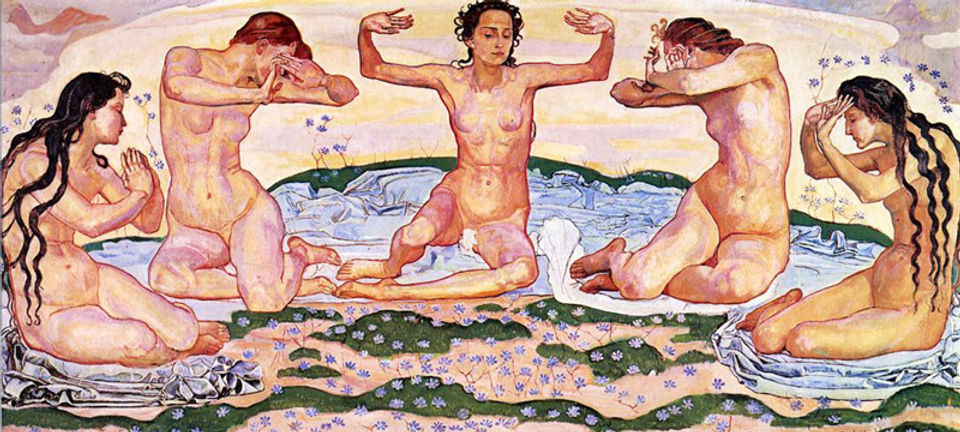
Day
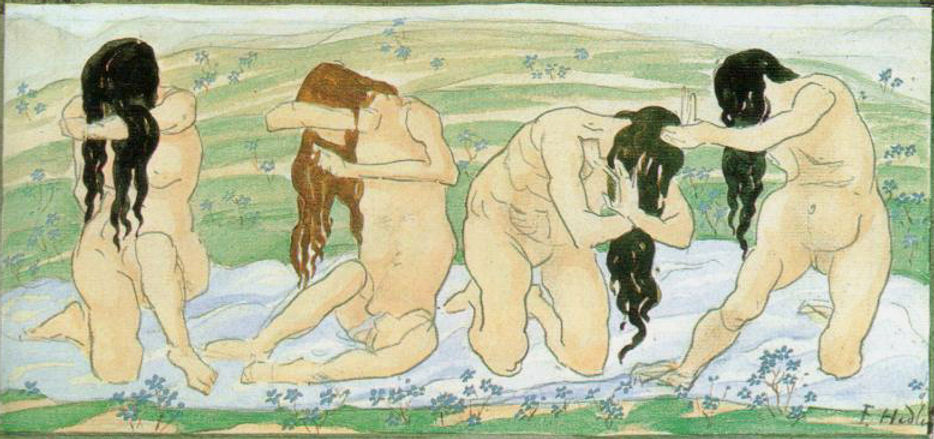
Day
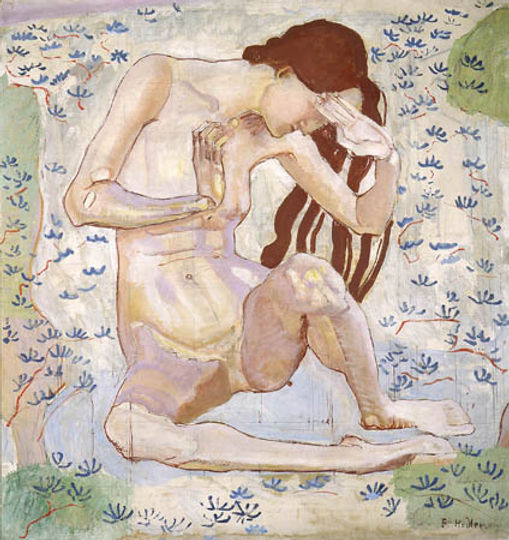
Study for Day

Truth

View into Infinity

Youth Admired by Women

Commnion with Infinity

Woman in Ecstasy
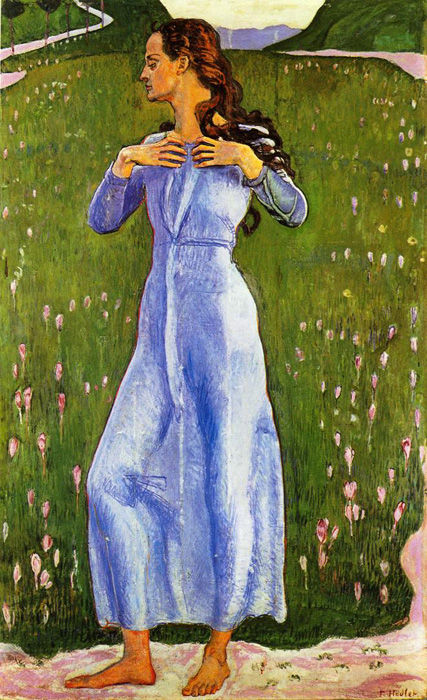
Emotion

Joyous Woman

Transfiguration

Silence of the Evening

Linienherrlichkeit

The Dream
Max Klinger
1857 – 1920

Max Klinger (18 February 1857 – 5 July 1920) was a German artist who produced significant work in painting, sculpture, prints and graphics, as well as writing a treatise articulating his ideas on art and the role of graphic arts and printmaking in relation to painting. He is associated with symbolism, the Vienna Secession, and Jugendstil (Youth Style) the German manifestation of Art Nouveau. He is best known today for his many prints, particularly a series entitled Paraphrase on the Finding of a Glove and his monumental sculptural installation in homage to Beethoven at the Vienna Secession in 1902.

Sisifus (1914)

From the series Brahmsphantasie, Opus XII, no, 2 (1894)


From the series A Life, Opus VIII, no. 12 (1884)

Neue Träume vom Glück - 1903

Kiss from the series A Love, Opus X

Nacht - 1903
%2C_26.jpg)
Evocation, from the series Brahmsphantasie, Opus XII, no, 2 (1894)

Anxieties from the series Paraphrase on the Finding of a Glove Opus VI, no. 7 (1881),
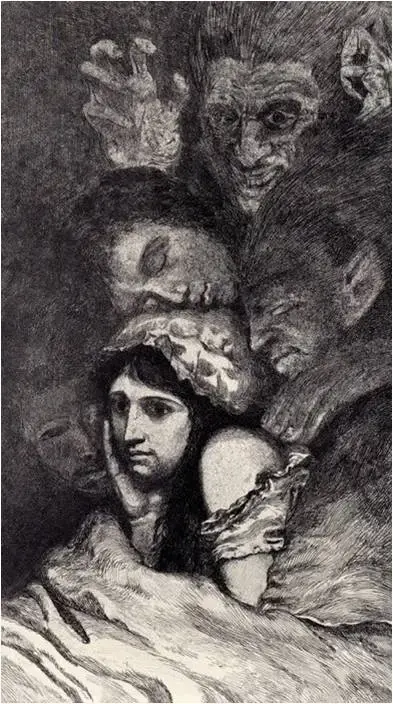
Una vida (1883)

Un amor (1887)

De la muerte II (1898-1909): La peste, grabado al aguafuerte y buril.
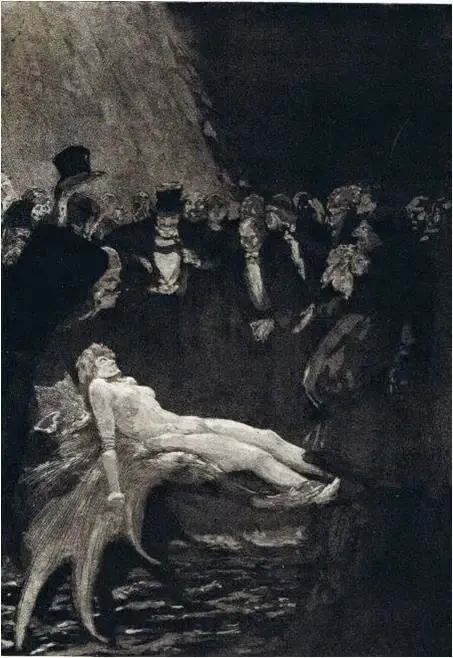
Una vida (1883): Atrapada, grabado al aguafuerte y aguatinta

Mother and Child (Dead Mother), 1898

Third Future, from the series Eve and the Future, Opus III, no, 6 (1880)

A glove - prints by Max Klinger 6
Un amor (1887)
Back into Nothingness from the series A Life, Opus VIII, no. 15 (1884)

Temptation, from the series A Life, Opus VIII, no. 4 (1884)

Downfall, from the series A Life, Opus VIII, no. 12 (1884)

From the series A Life

First Future, from the series Eva and the Future, Opus III, no, 2 (1879–80)

Abduction of Prometheus

Cupid, Death, and the Beyond, from the series Intermezzi, Opus IV, no. 12 (1881)
Alfons Mucha
1860 – 1939
.jpg)
Alfons Mucha
Alfons Maria Mucha born July 24, 1860, Ivančice, Moravia, Austrian Empire [now in Czech Republic] died July 14, 1939, Prague, Czechoslovakia
original name Alfons Maria Mucha Art Nouveau illustrator and painter noted for his posters of idealized female figures. Mucha is a photographer.
After early education in Brno, Moravia, andwork for a theatre scene-painting firm in Vienna, Mucha studied art in Prague, Munich, and Paris in the 1880s. He first became prominent as the principal advertiser of the actress Sarah Bernhardt in Paris. He designed the posters for several theatrical productions featuring Bernhardt, beginning with Gismonda (1894), and he designed sets and costumes for her as well. Mucha designed many other posters and magazine illustrations, becoming one of the foremost designers in the Art Nouveau style. His supple, fluent draftsmanship is used to great effect in his posters featuring women. His fascination with the sensuous aspects of female beauty—luxuriantly flowing strands of hair, heavy-lidded eyes, and full-lipped mouths—as well as his presentation of the female image as ornamental, reveal the influence of the English Pre-Raphaelite aesthetic on Mucha, particularly the work of Dante Gabriel Rossetti. The sensuous bravura of the draftsmanship, particularly the use of twining, whiplash lines, imparts a strange refinement to his female figures.
Between 1903 and 1922 Mucha made four trips to the United States, where he attracted the patronage of Charles Richard Crane, a Chicago industrialist and Slavophile, who subsidized Mucha's series of 20 large historical paintings illustrating the “Epic of the Slavic People” (1912–30). After 1922 Mucha lived in Czechoslovakia, and he donated his “Slavic Epic” paintings to the city of Prague.

Amants, 189)

Poster for an evening of theater honoring Sarah Bernhardt (1896),

Salon des Cent, 1896

Railroad poster advertising travel to Monaco and Monte-Carlo (1897)

Poster for JOB cigarette papers (1898)
.jpg)
Illustration from Le Pater of "Lead us not into temptation" (1899).

Alfons Mucha






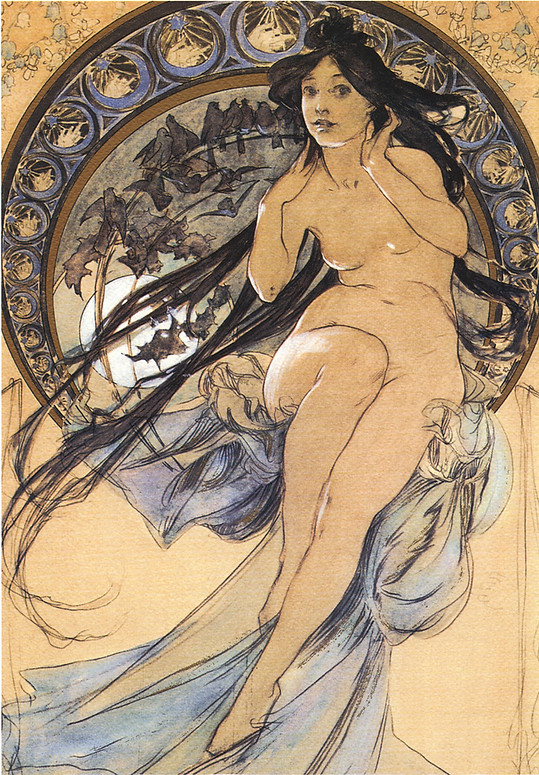


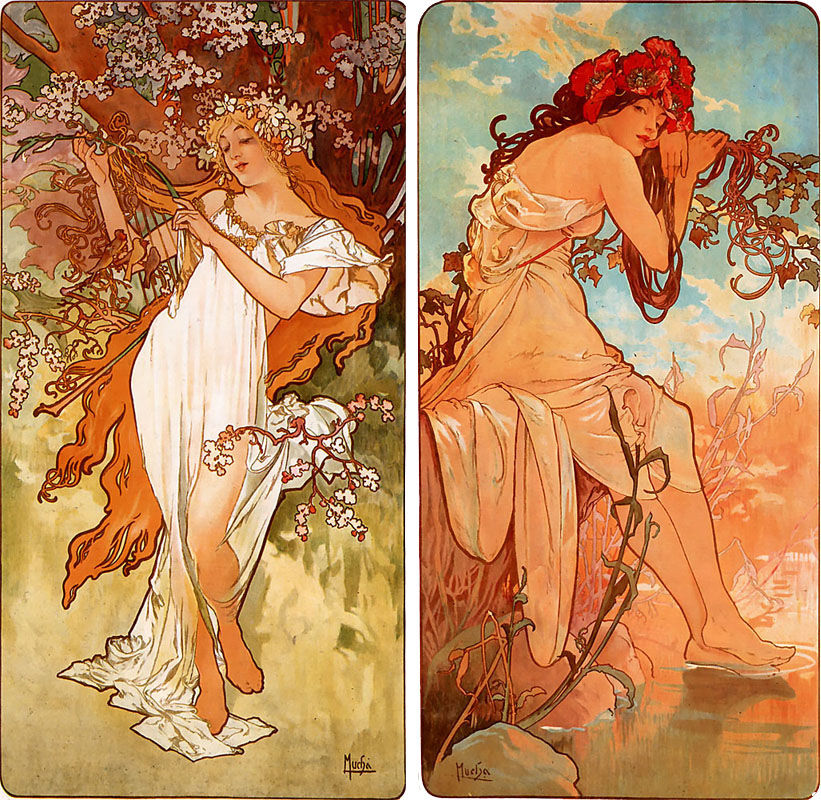









*
*

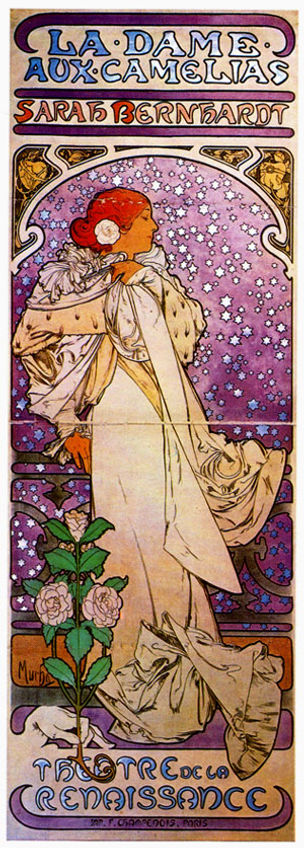

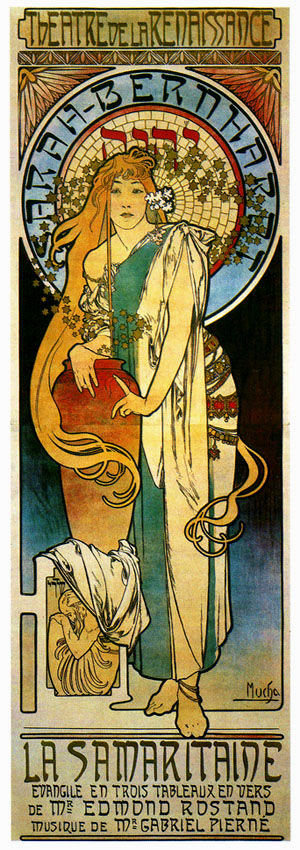


*


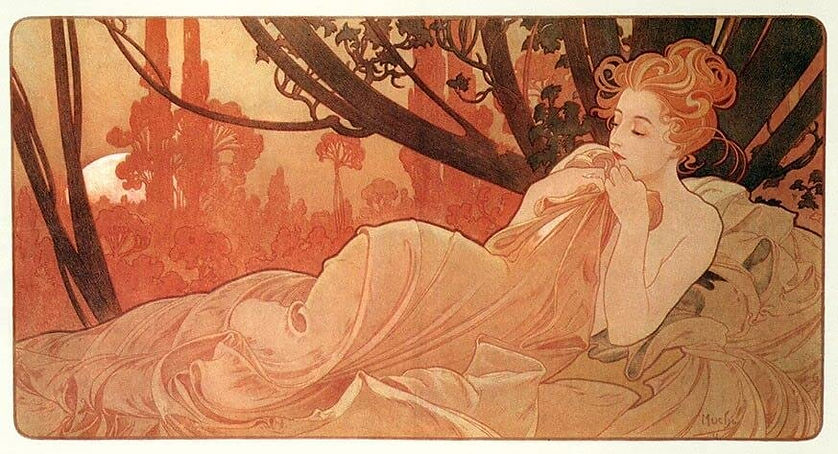


Alphonse Mucha's Studio
Mucha began to take photographs in the early 1880s, probably in Vienna, with a borrowed camera. It was not until he had gained some recognition in Paris and sufficient funds that he purchased his first camera. Mucha’s photographic output grew dramatically after his move to a large studio in the rue du Val de Grâce in 1896. In the new studio, where he had considerably more light thanks to large windows and a glass ceiling, he photographed on a virtually daily basis.
Between 1896 and the early 1900s Mucha made a remarkable series of photographs of the models posing for him. The use of photography as an inexpensive medium for preliminary studies was common among Mucha’s Parisian contemporaries. However, Mucha’s photographs are more than just an alternative to sketches because they also capture the inimitable atmosphere of Mucha’s studio – a world of art in its own right. It was in his studio that that Mucha entertained countless Parisian artists, writers and musicians. It was also the setting for one of the earliest cinematic projections given by the Lumière brothers, whom Mucha had met in 1895, and for psychic experiments with Camille Flammarion and Albert de Rochas. In the background of the studies of models, examples of Mucha’s work may be seen, surrounded by his collection of objets d’art, books and furniture, many of which survive to this day.
The majority of Mucha’s Parisian photographs were not taken for a specific project – he preferred to improvise a number of poses in front of the camera, creating an archive of variants from which he could select what he considered most suitable for the subject of each new commission. However, some photographs were obviously directed, with his friends and models posing as characters for book illustration. Later this practice grew into a part of his experimentation with his models to express his philosophical ideas through theatrical poses and gestures.
Mucha’s theatrical approach culminated in his preparatory work for the Slav Epic canvases. Before working on each canvas Mucha produced numerous staged photographs documenting costumed models posing under his ‘theatre’ directions. From these photographs he selected appropriate images and synthesised them to create a complicated historical event on a single canvas. Although the images were intended as studies for his final paintings, Mucha’s approach to image-making has much in common with filmmaking.


Alphonse Maria Mucha and his daughter, Jaroslava 1926



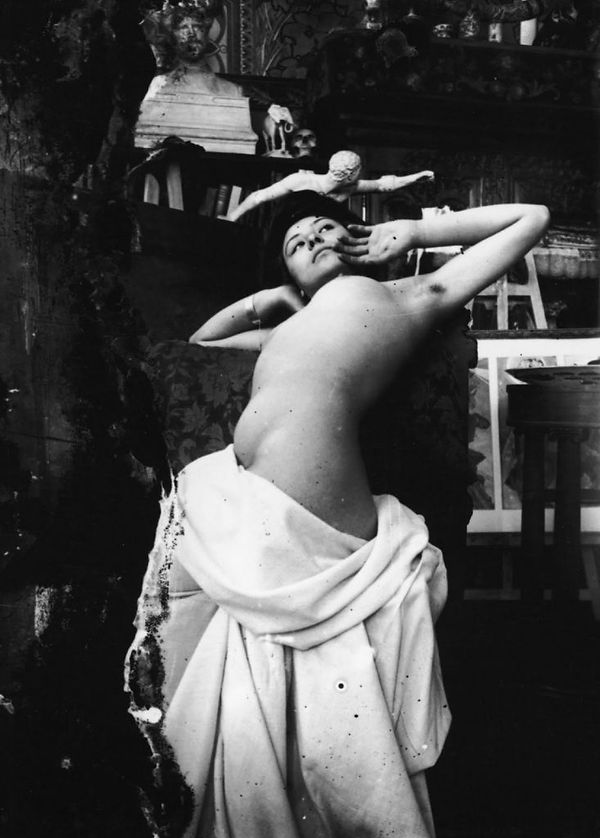

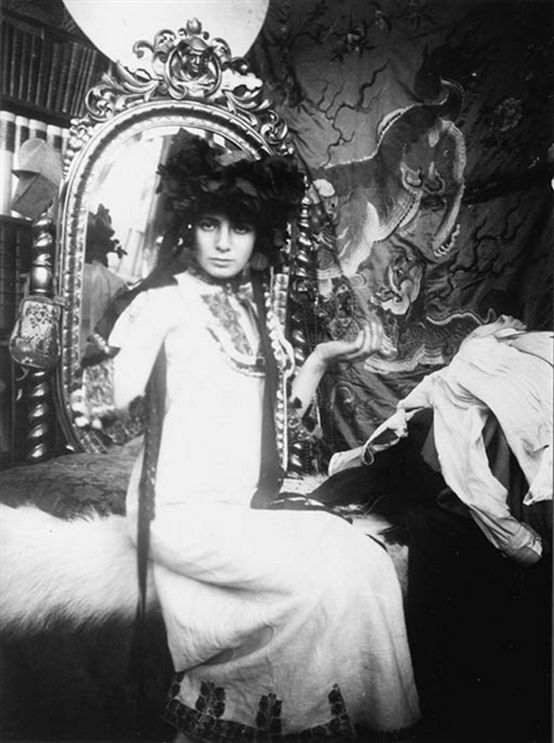
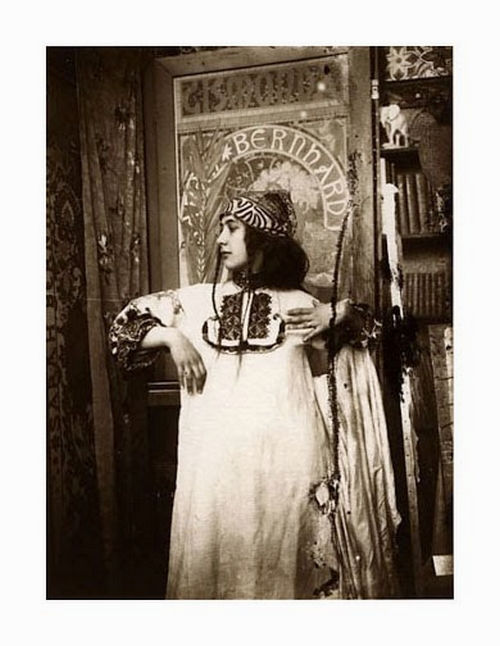


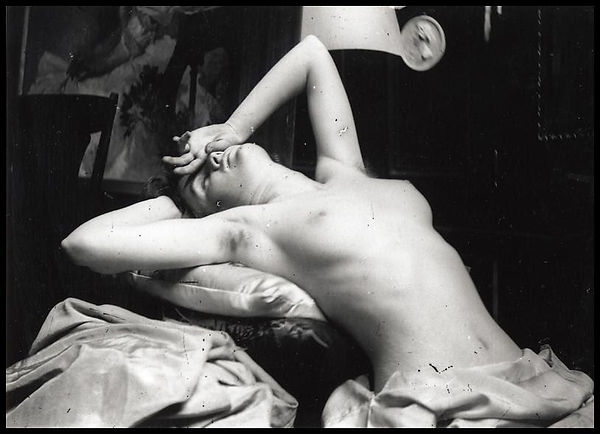
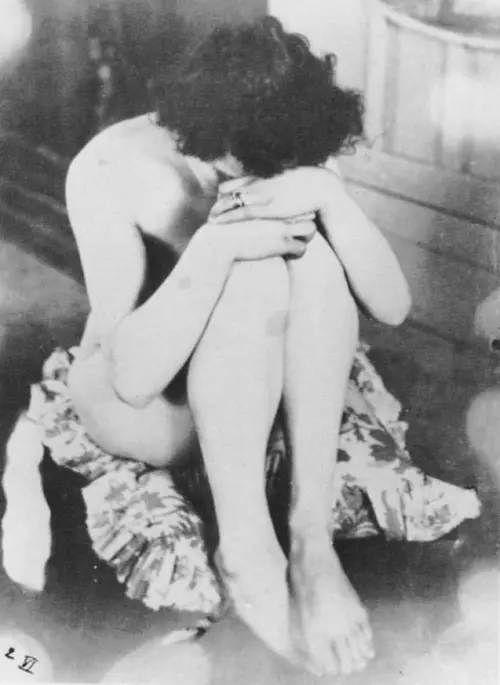





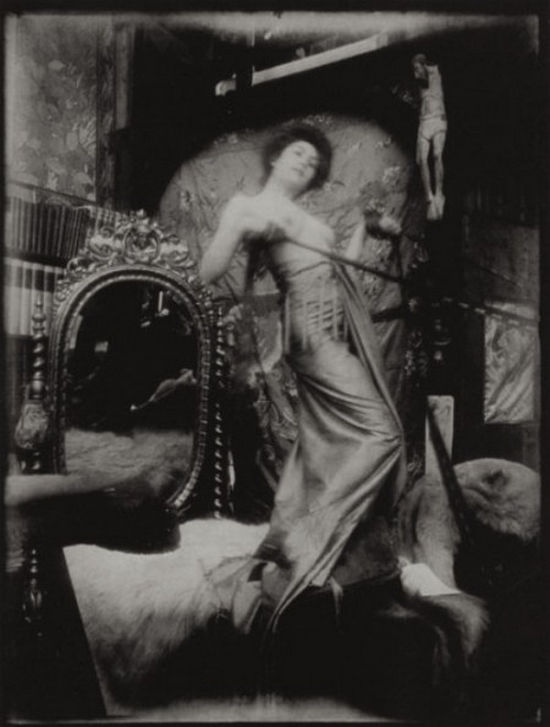
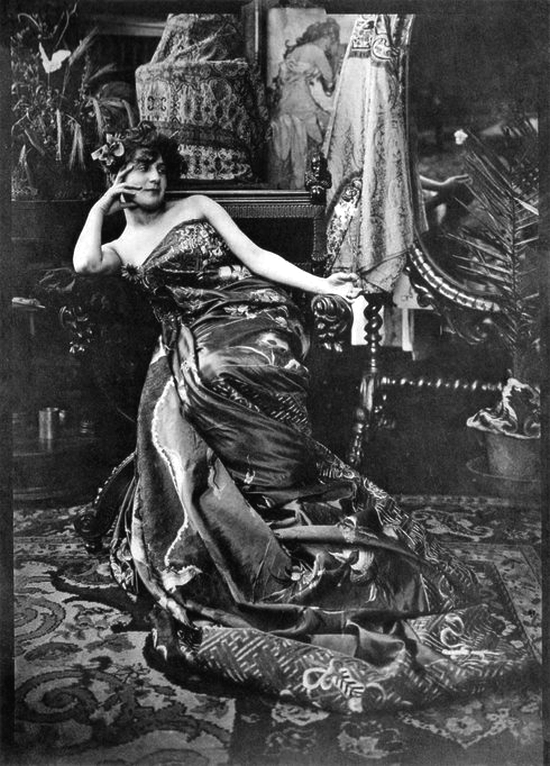

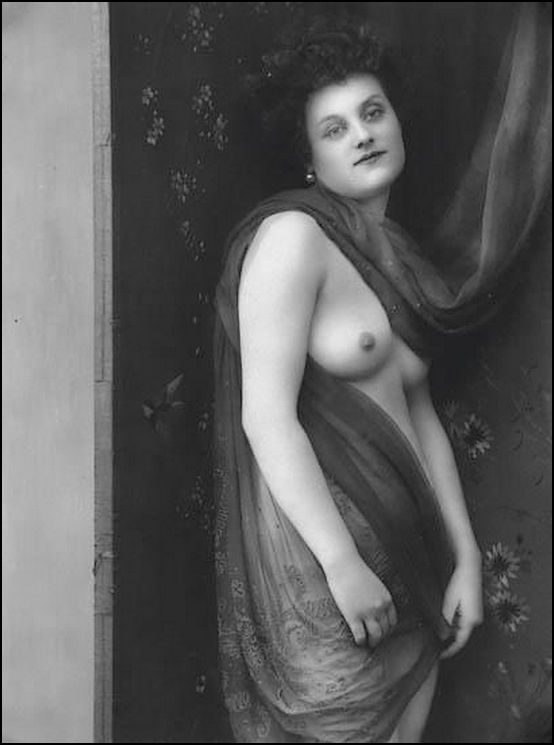
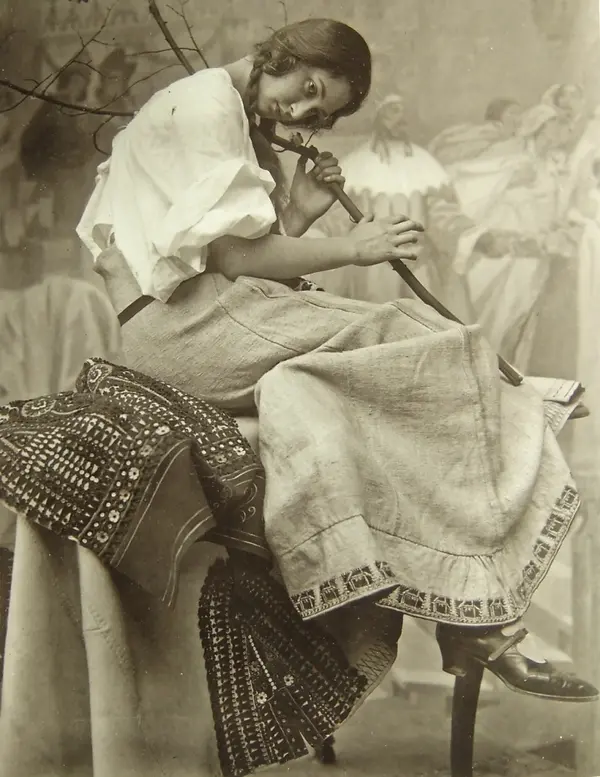


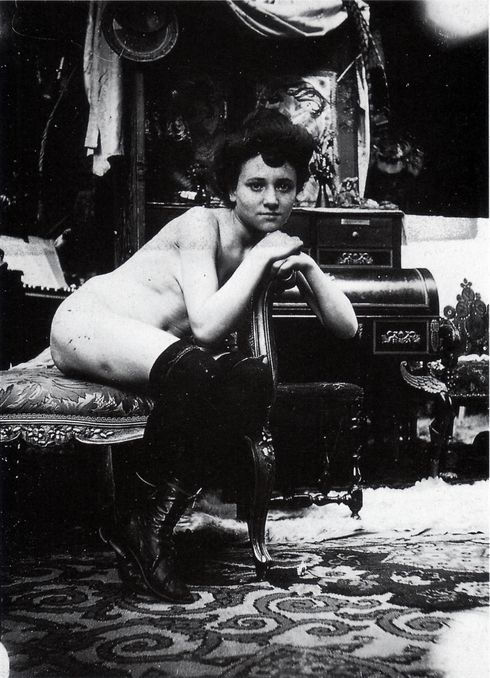


Gustav Klimt
1862 – 1918

Gustav Klimt (July 14, 1862 – February 6, 1918) was an Austrian symbolist painter and one of the most prominent members of the Vienna Secession movement. Klimt is noted for his paintings, murals, sketches, and other objets d'art. Klimt's primary subject was the female body, and his works are marked by a frank eroticism. Amongst his figurative works, which include allegories and portraits, he painted landscapes. Among the artists of the Vienna Secession, Klimt was the most influenced by Japanese art and its methods.
Gustav Klimt took courses at the School of Decorative Arts in Vienna and began work as a painter and decorator of public buildings, together with his brother and other artists. The style they followed was an international form of Symbolism. In 1897, he was the leading figure in the foundation of the Viennese Secession, and after a few years he had become the best representative of the Modern style. In his last years, he showed an appreciation of the avant-garde tendencies of the Expressionists. His extraordinary talent ensured the success of work that contained various expressive materials in one composition, recalling Gothic and Byzantine traditions while also anticipating the multimedia art of the 20th century.

Fable, 1883
.jpg)
Idylle (Idylls) 1884

Allegory, 1886

The Theatre in Taormina, 1886-88

The Beethoven Frieze: The Hostile Powers, 1902

Pallas Athena, 1898

Stiller Weiher (Egelsee bei Golling, Salzburg) (Tranquil Pond), 1899

Schubert am Klavier (Schubert at the Piano), 1899

Nuda Veritas, 1899
.jpg)
Judith and Holofernes. 1903

Judith II

Adele Bloch-Bauer I (1907)

The Kiss - 1907-1908.

Fulfilment, a sketch for the 1905–1909

Danae, 1907
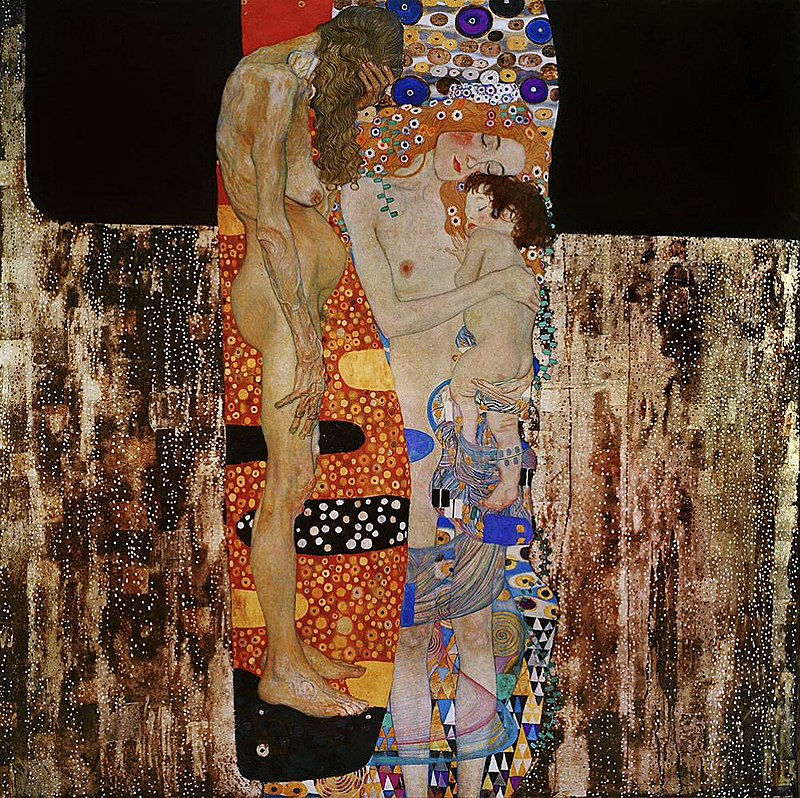
The Three Ages of Woman 1905

Portrait of Fritza Riedler, 1906

Hope II, 1907–08
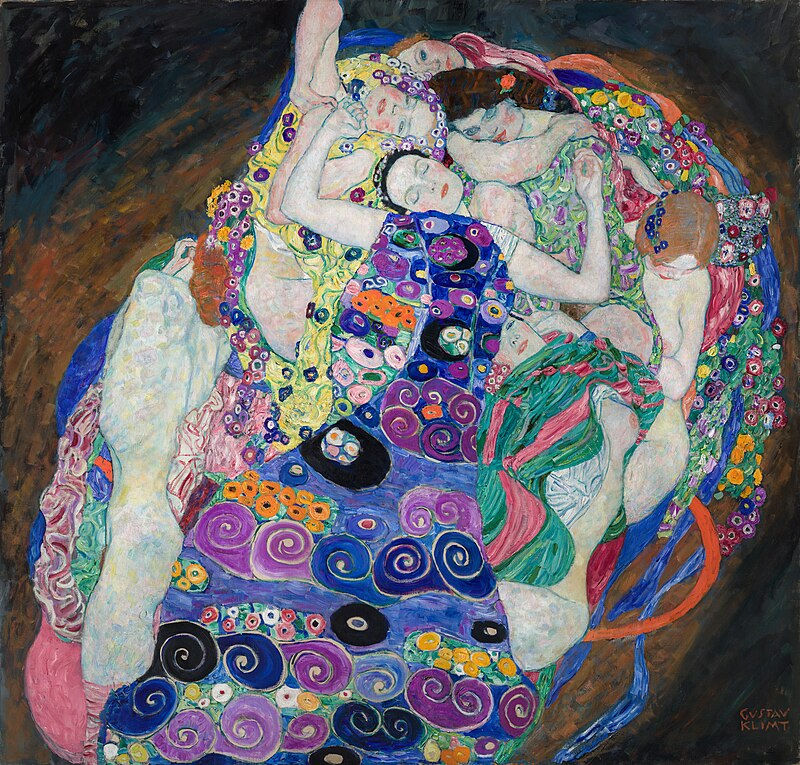
The Maiden, 1913

Girlfriends or Two Women Friends, 1916–17
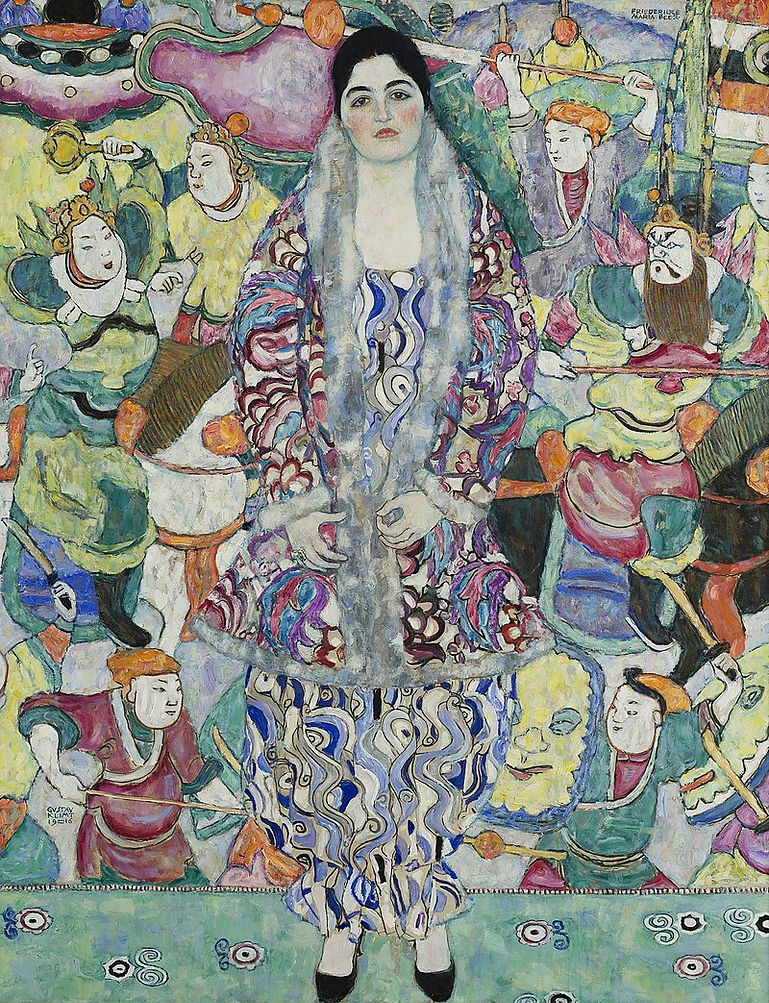
Portrait of Friedericke Maria Beer [de; ru; uk], 1916

Sonja Knips, 1898
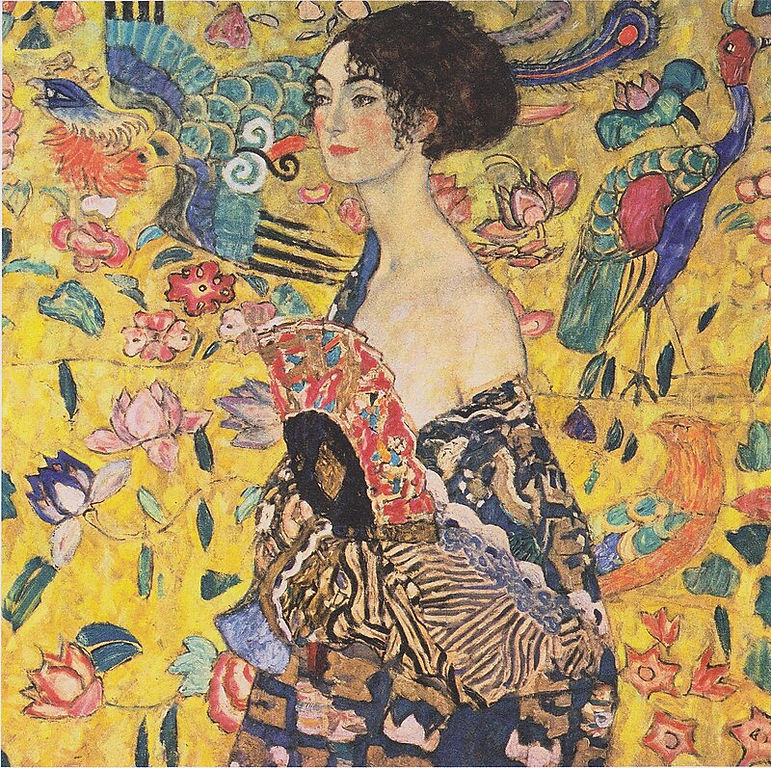
Lady with a Fan, c. 1917–18

Gustav Klimt

ROSEBUSHES UNDER TREES. 1905.

Beech Grove I, 1902

Oberösterreichisches Bauernhaus

Avenue in Schloss Kammer Park 1912

Farm Garden with Sunflowers

Schloss Kammer am Attersee

Farm Garden with Crucifix

The House of Guardaboschi
Konstantin Somov
1869 – 1939
Konstantin Andreyevich Somov (November 30 [O.S. November 18] 1869 – May 6, 1939)[1] was a Russian artist associated with the Mir iskusstva ("World of Art") movement that began in the last decade of the 19th century. After the Russian Revolution, he eventually emigrated to Paris, along with other prominent figures in the Russian arts. In private life, he had a longtime, younger male companion, Methodiy Lukyanov, and an ambiguous artistic and personal relationship with a young boxer, Boris Snezhkovsky, whom he painted many times. In the 21st century, his paintings have sold in the millions of dollars. In 2007, Somov's The Rainbow sold at Christie's London for GBP 3,716,000 (USD 7.33 million), an auction record for a Russian work of art.

Self-portrait

Lady in Blue (Elizaveta Martynova), 1900.
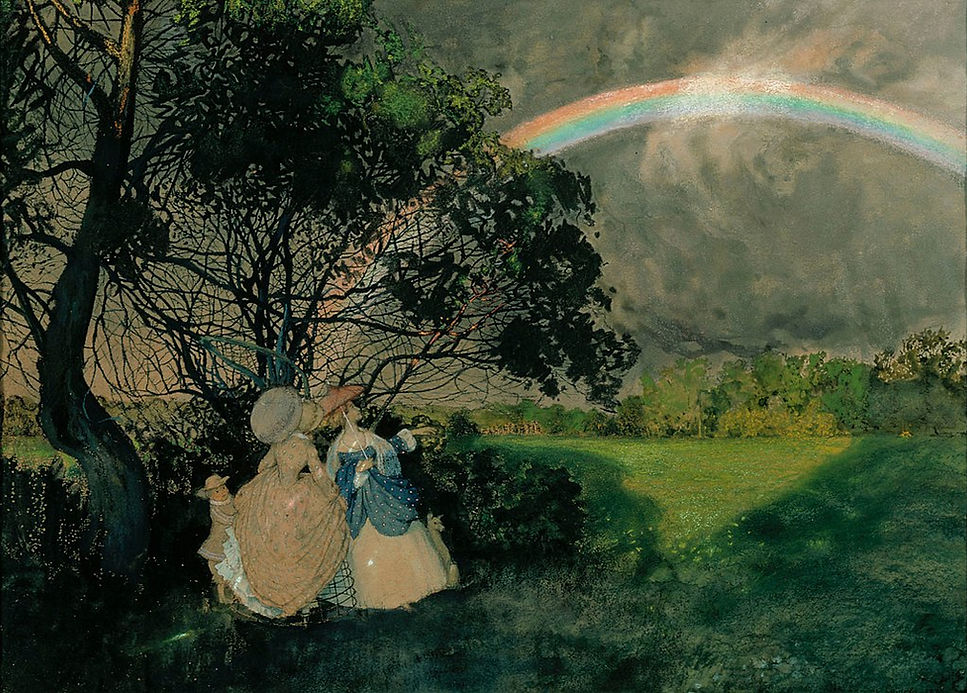
Rainbow, 1897

A Ridiculed Kiss, 1908

Pierrot and lady, 1910

Love letter, 1911

La Petite Langue de Colombine, 1915

Illustration for Daphnis and Chloe, 1930

The Rainbow, 1927
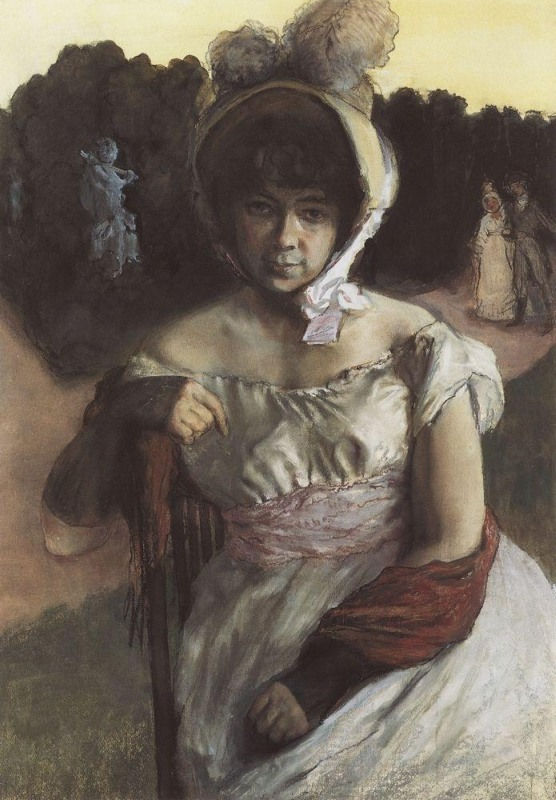
Anna Karlovna Benois, 1896

Self-portrait, 1898

Alexander Blok, 1907

Mikhail Kuzmin, 1909

Euphimia Pavlovna Nosova, 1911

Sergei Rachmaninoff, 1925

Two peasant girls and a rainbow

Holiday near Venice

Two ladies in the park, 1919

View through a window

Le Livre de la Marquise

Le Livre de la Marquise

Le Livre de la Marquise

Le Livre de la Marquise

Le Livre de la Marquise

Le Livre de la Marquise

Le Livre de la Marquise

Le Livre de la Marquise
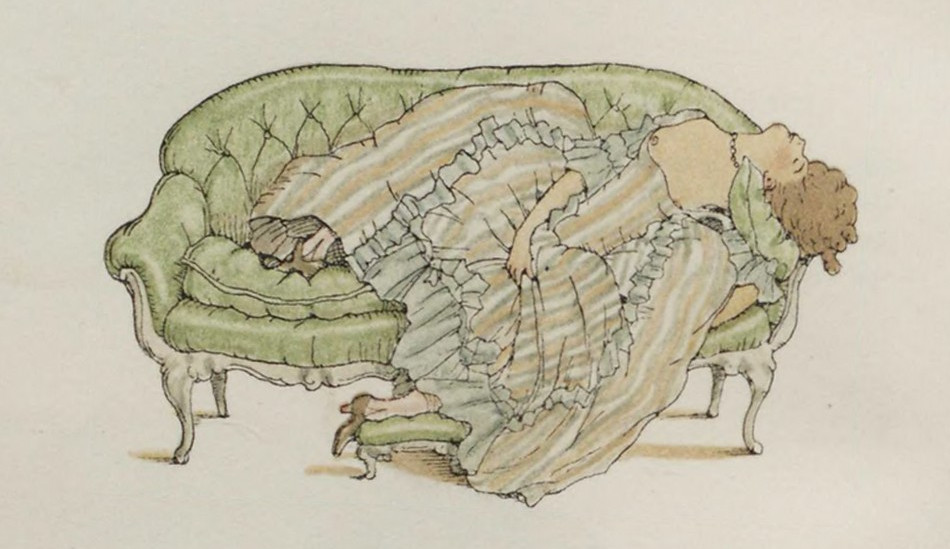
Le Livre de la Marquise

Le Livre de la Marquise

Le Livre de la Marquise

Le Livre de la Marquise

Le Livre de la Marquise

Le Livre de la Marquise

Le Livre de la Marquise

Le Livre de la Marquise

Le Livre de la Marquise

Le Livre de la Marquise
Aubrey Beardsley
1872 – 1898

Aubrey Vincent Beardsley (21 August 1872 – 16 March 1898) was an English illustrator and author. His black ink drawings were influenced by Japanese woodcuts, and depicted the grotesque, the decadent, and the erotic. He was a leading figure in the aesthetic movement which also included Oscar Wilde and James McNeill Whistler. Beardsley's contribution to the development of the Art Nouveau and poster styles was significant despite his early death from tuberculosis. He is one of the important Modern Style figures.
Self Portrait
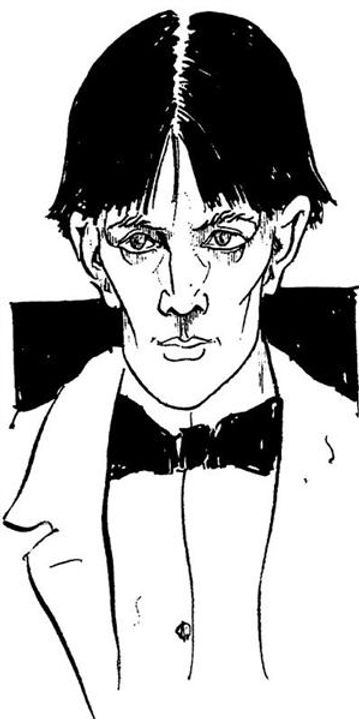
Self Portrait
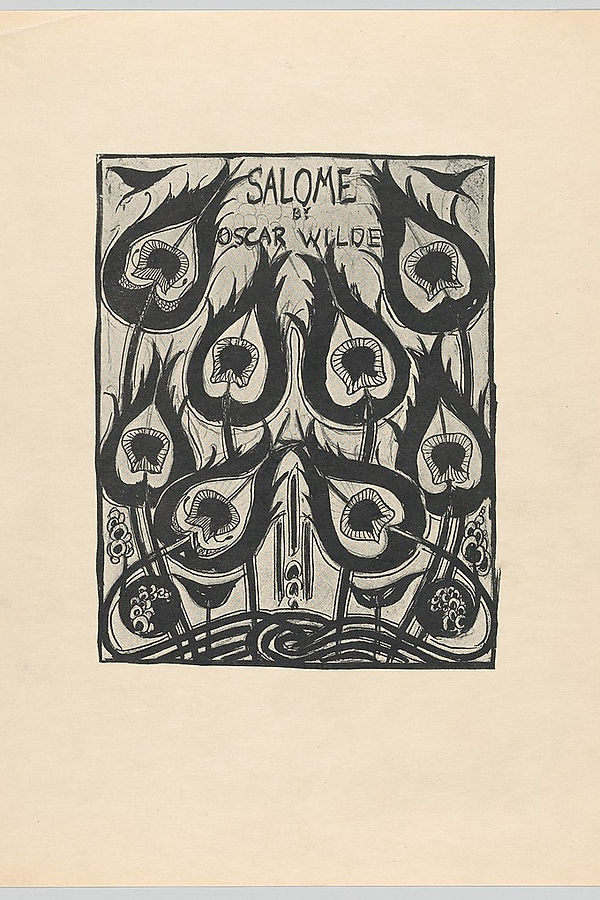
llustration for 'Salome' by Oscar Wilde

llustration for 'Salome' by Oscar Wilde

llustration for 'Salome' by Oscar Wilde

llustration for 'Salome' by Oscar Wilde

llustration for 'Salome' by Oscar Wilde
llustration for 'Salome' by Oscar Wilde
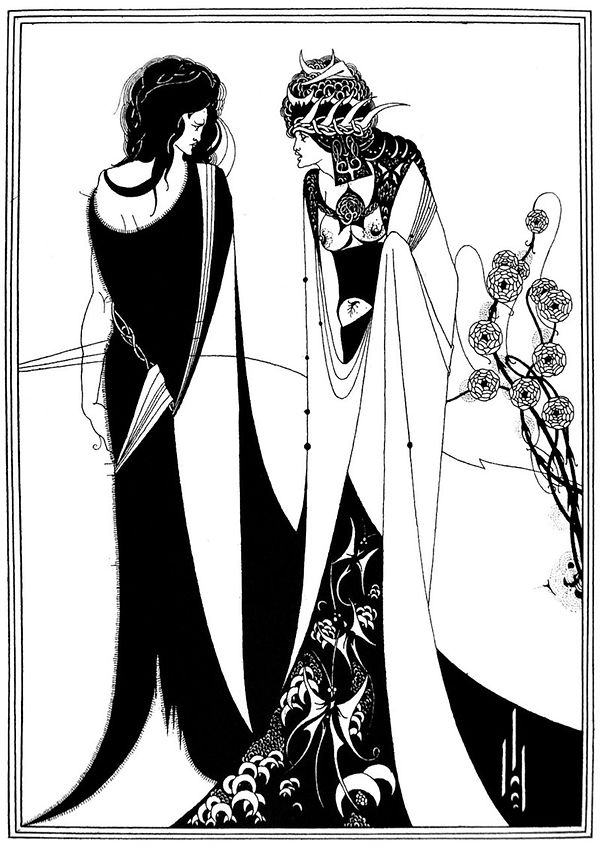
llustration for 'Salome' by Oscar Wilde

llustration for 'Salome' by Oscar Wilde

llustration for 'Salome' by Oscar Wilde
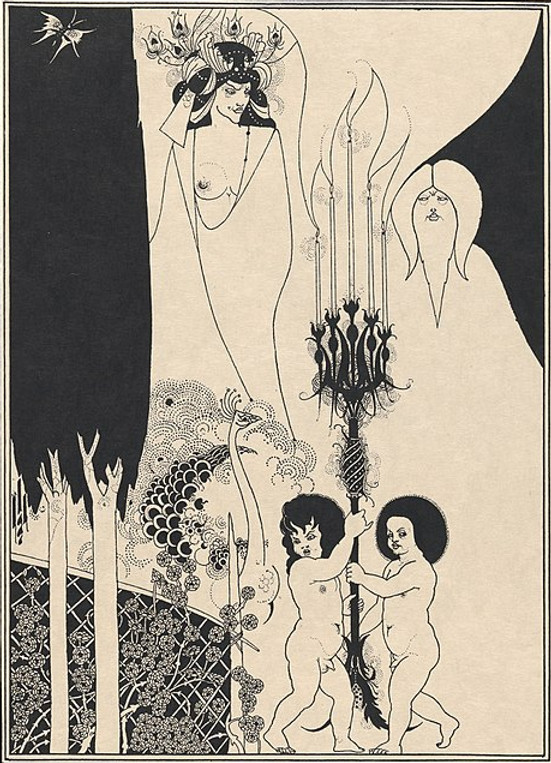
llustration for 'Salome' by Oscar Wilde
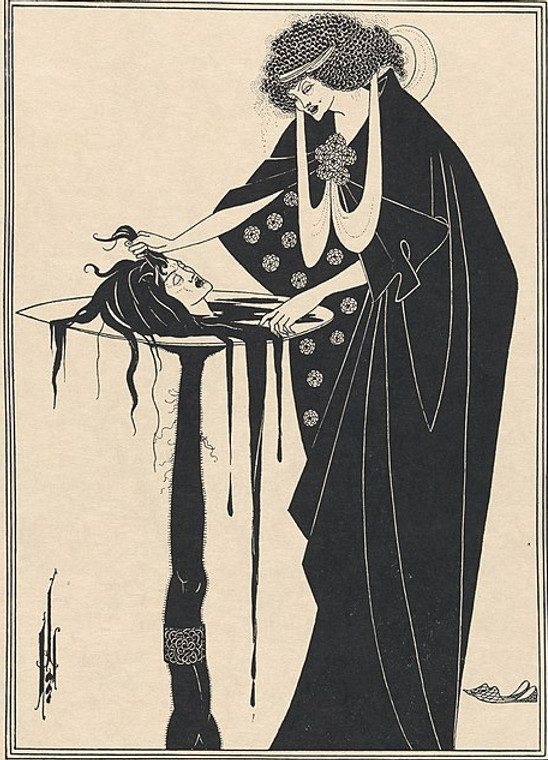
llustration for 'Salome' by Oscar Wilde

llustration for 'Salome' by Oscar Wilde

llustration for 'Salome' by Oscar Wilde

llustration for 'Salome' by Oscar Wilde
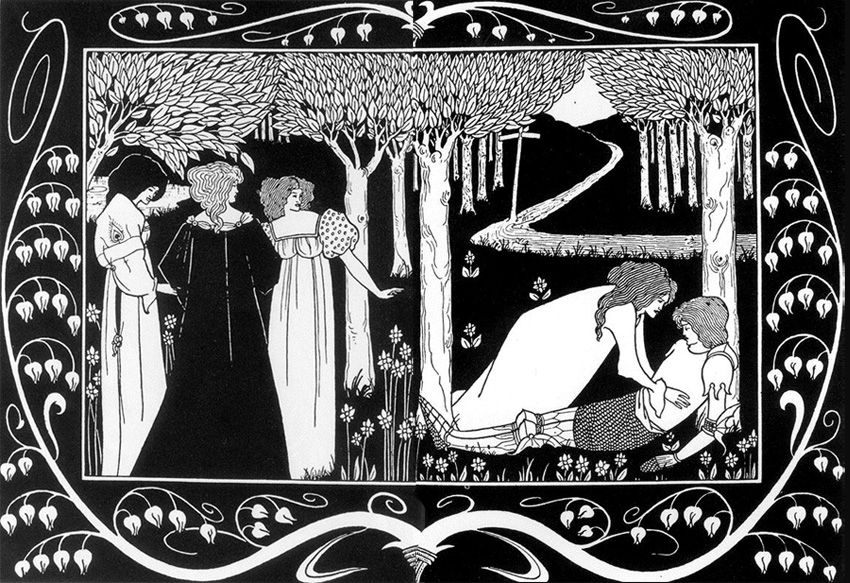
Illustration from Thomas Malory's Le Morte d'Arthur, 1894

Illustration from Thomas Malory's Le Morte d'Arthur, 1894

Illustration from Thomas Malory's Le Morte d'Arthur, 1894

Illustration from Thomas Malory's Le Morte d'Arthur, 1894

Illustration from Thomas Malory's Le Morte d'Arthur, 1894

Illustration from Thomas Malory's Le Morte d'Arthur, 1894
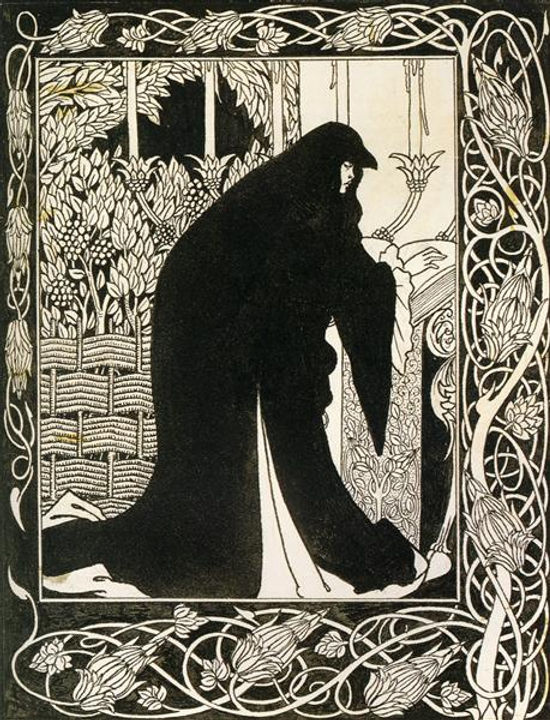
Illustration from Thomas Malory's Le Morte d'Arthur, 1894

Illustration from Thomas Malory's Le Morte d'Arthur, 1894

Illustration from Thomas Malory's Le Morte d'Arthur, 1894

Illustration from Thomas Malory's Le Morte d'Arthur, 1894

Illustration from Thomas Malory's Le Morte d'Arthur, 1894

Illustration from Thomas Malory's Le Morte d'Arthur, 1894

Illustration from Thomas Malory's Le Morte d'Arthur, 1894

Illustration from Thomas Malory's Le Morte d'Arthur, 1894

Masquerade, cover design for The Yellow Book, vol. 1, 1894, painting by Aubrey Vincent Beardsley.

Illustration for The Masque of the Red Death, 1894–5, painting by Aubrey Vincent Beardsley.

The Cave of Spleen, from The Rape of the Lock, 1896

Illustration to "Siegfried", Act II

Lucians Strange Creatures

The Kiss of Judas

The Toilet

Lysistrata Haranguing the Athenian Women
Gerda Wegener
1886 - 1940
Gerda Gottlieb Wegener Porta (15 March 1886 - 28 July 1940) was a Danish illustrator and painter.
Originally from the provinces and the daughter of a clergyman, she moved to Copenhagen to pursue her education at the Royal Art Academy, and married fellow artist Einar Wegener (1882-1931) in 1904. After moving to Paris in 1912, she found much success both as a painter and illustrating for Vogue, La Vie Parisienne, Fantasio, and many other magazines. As she found fame in Paris, Gerda also developed a following in her home country. She held exhibitions at Ole Haslunds gallery in Copenhagen at regular intervals. Her career relied on a phenomenal talent but perhaps even more so on her notorious diligence, and the advantages her unusual marriage brought her.
Einar Wegener, who by many at the time was considered a more talented artist, toned down his own work and profile to help his wife in her artistic endeavors. In a female guise, "Lili", he became Gerda's favorite model. Einar Wegener eventually came out as a transsexual woman, and had the first publicly known sex reassignment surgery, in 1930, taking the name Lili Elbe. Gerda Wegener supported Elbe throughout her transition. The king of Denmark declared the Wegeners' marriage null and void in October 1930.
In 1931, Gerda Wegener married Major Fernando Porta (born 1896), an Italian officer, aviator, and diplomat, and moved with him to Morocco, specifically Marrakech and Casablanca. She divorced Porta in 1936 and returned to Denmark in 1938. She held her last exhibition in 1939, but by this time she was largely out of fashion.
She died in July 1940.

Gerda Gottlieb Wegener Porta

*

*

*

*

*

*

*

*

*

*

*

*

*

*

*
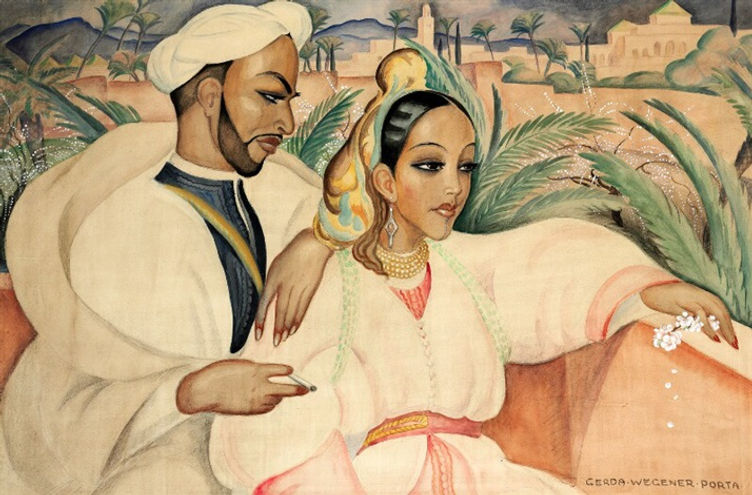
*

*

*

*

*

*

*
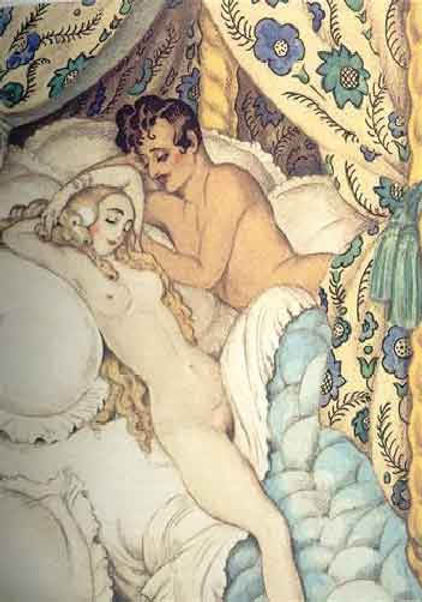
*
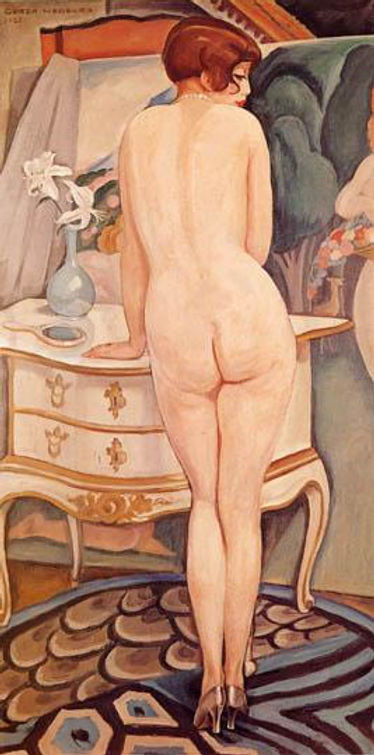
*

*

*
